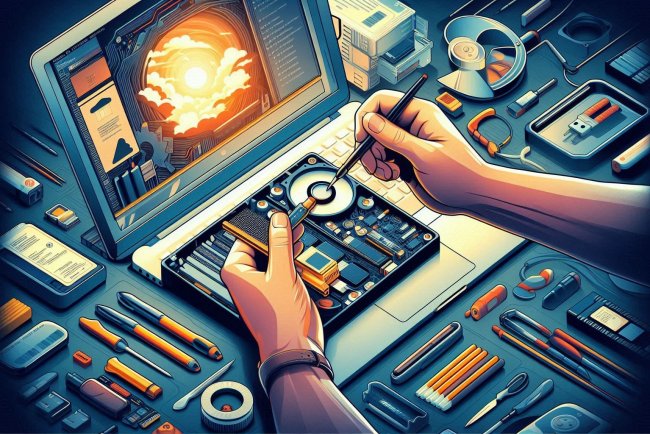How to Fix Windows 7 Update Loop
Learn how to fix the Windows 7 update loop issue quickly and easily with our step-by-step guide. Stop the endless cycle and get your system running smoothly again.

To fix the Windows 7 update loop issue, you can try the following solutions: 1. **Boot into Safe Mode**: - Restart your computer and continuously press the F8 key before the Windows logo appears. - Select "Safe Mode" from the advanced boot options menu. - Once in Safe Mode, try running Windows Update to see if it completes successfully without getting stuck in a loop. 2. **Run Windows Update Troubleshooter**: - Press the Windows key + R, type "control panel", and hit Enter. - Go to "System and Security" > "Troubleshoot common computer problems". - Select "Fix problems with Windows Update" and follow the on-screen instructions. 3. **Reset Windows Update Components**: - Press the Windows key + R, type "cmd", and press Ctrl + Shift + Enter to open an elevated Command Prompt. - Stop the Windows Update Service by typing the following commands: ``` net stop wuauserv net stop cryptSvc net stop bits net stop msiserver ``` - Rename the SoftwareDistribution and Catroot2 folders by entering the following commands: ``` ren C:\Windows\SoftwareDistribution SoftwareDistribution.old ren C:\Windows\System32\catroot2 Catroot2.old ``` - Restart the Windows Update Service: ``` net start wuauserv net start cryptSvc net start bits net start msiserver ``` 4. **Manually Install Windows Updates**: - Go to the Microsoft Update Catalog website (https://www.catalog.update.microsoft.com/Home.aspx) using Internet Explorer. - Search for the latest Windows updates for your system and download them. - Install the updates manually by double-clicking on the downloaded files. 5. **Check for System File Corruption**: - Open an elevated Command Prompt by pressing the Windows key + R, typing "cmd", and pressing Ctrl + Shift + Enter. - Run the System File Checker (SFC) tool by typing the following command: ``` sfc /scannow ``` - Wait for the scan to complete and follow any on-screen instructions to repair corrupted system files. 6. **Check for Malware**: - Run a full system scan using your antivirus software to check for any malware that may be interfering with Windows Update. - You can also use Windows Defender Offline to scan your system for malware before Windows starts up. 7. **Perform a System Restore**: - If the update loop started recently, you can try performing a System Restore to revert your system to a previous state. - Press the Windows key + R, type "rstrui", and hit Enter to open the System Restore wizard. - Follow the on-screen instructions to choose a restore point before the update loop issue started. 8. **Check for Windows Activation**: - Ensure that your Windows 7 installation is properly activated. If Windows is not activated, it may prevent updates from installing correctly. - Go to Control Panel > System and Security > System to check your activation status. 9. **Disable Startup Programs**: - Press the Windows key + R, type "msconfig", and hit Enter to open the System Configuration utility. - Go to the "Startup" tab and disable all unnecessary startup programs. - Restart your computer and check if Windows Update now completes without getting stuck. 10. **Update Device Drivers**: - Outdated or incompatible device drivers can sometimes cause Windows update issues. Update your drivers to the latest versions to ensure compatibility. - You can use Device Manager to check for driver updates or visit the manufacturer's website for the latest drivers. 11. **Check Disk for Errors**: - Open an elevated Command Prompt and type the following command to check your disk for errors: ``` chkdsk /f /r ``` - You may need to schedule a disk check on the next system restart. Confirm and restart your computer to allow the check to run. 12. **Check for Pending Updates**: - Sometimes, pending updates can cause Windows Update to get stuck in a loop. Check for any pending updates by going to Control Panel > System and Security > Windows Update. 13. **Reset Windows Update Components Automatically**: - If manually resetting Windows Update components seems daunting, you can use the Microsoft Easy Fix tool to automate the process. - Download the Windows Update Troubleshooter from Microsoft's support site and run it to reset Windows Update components. 14. **Perform a Clean Boot**: - Press the Windows key + R, type "msconfig", and hit Enter to open the System Configuration utility. - Go to the "Services" tab, check "Hide all Microsoft services", and click "Disable all". -
What's Your Reaction?

















